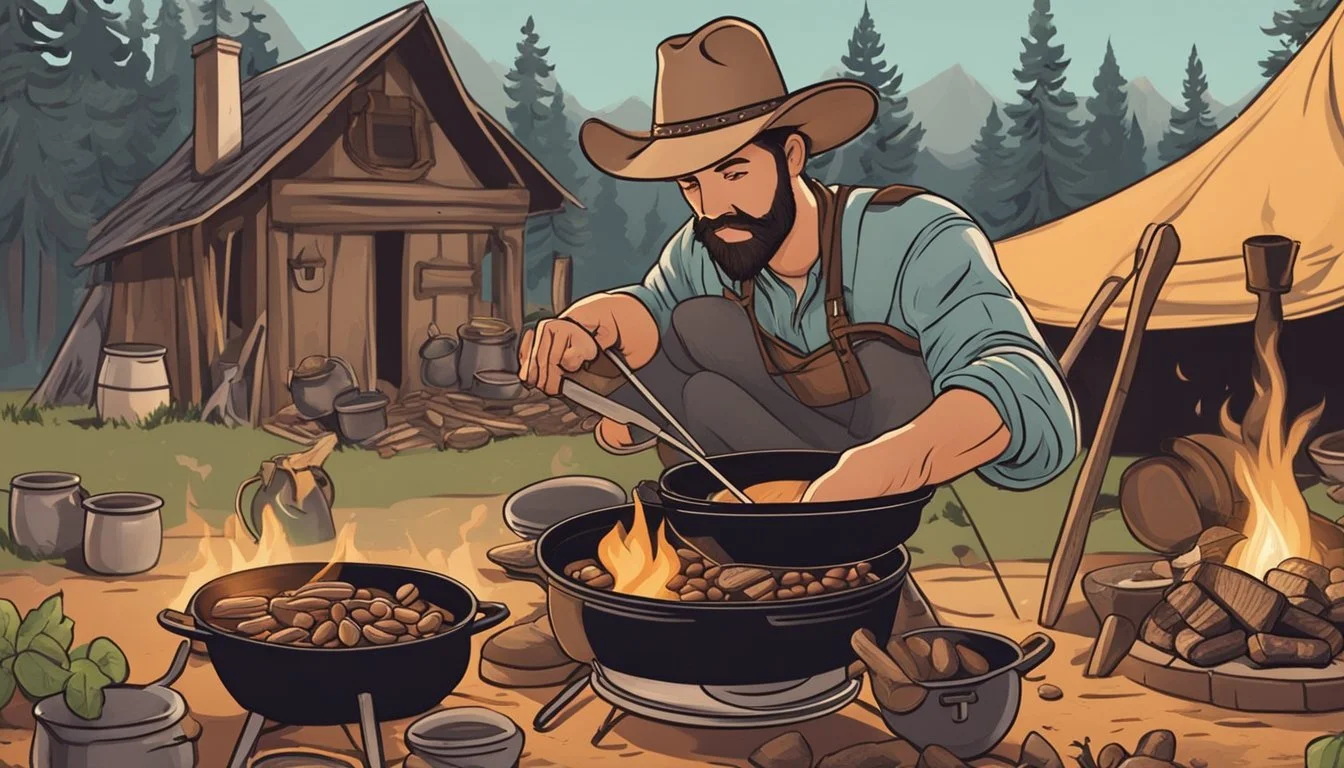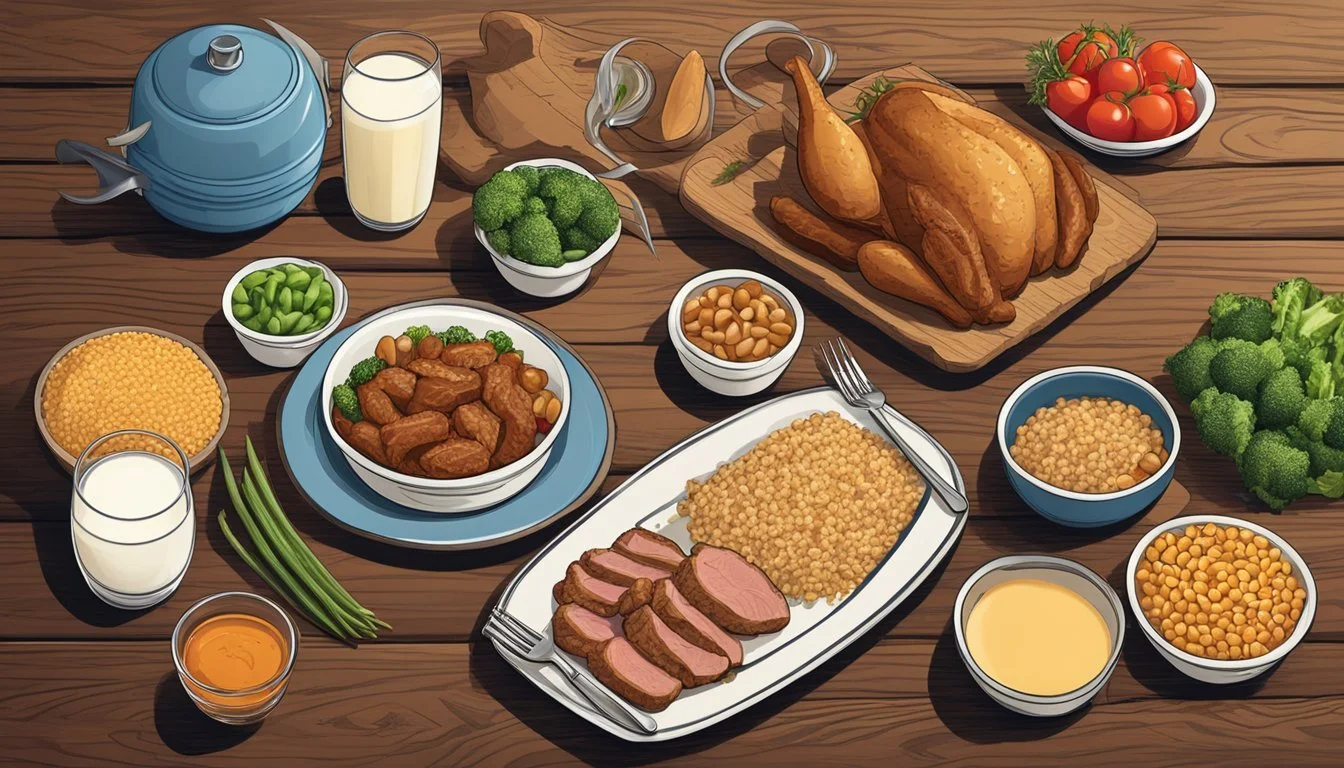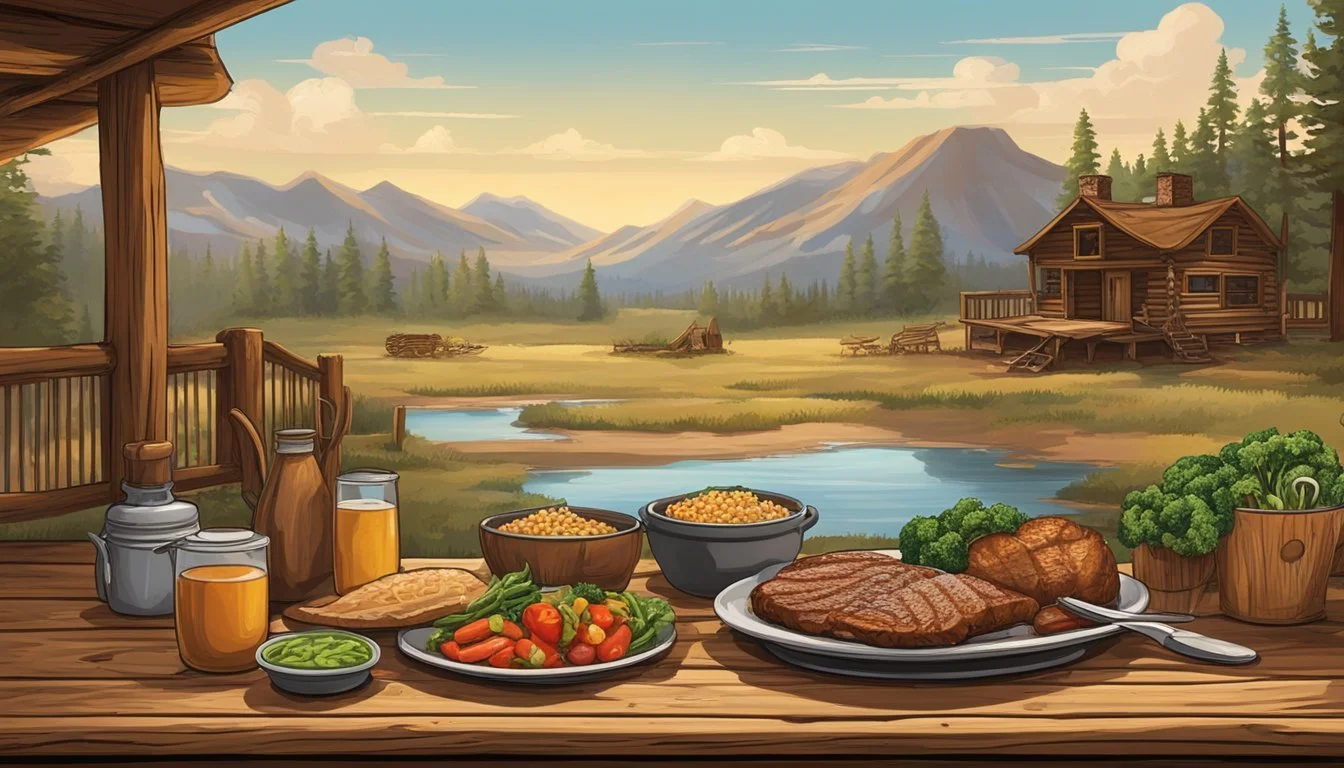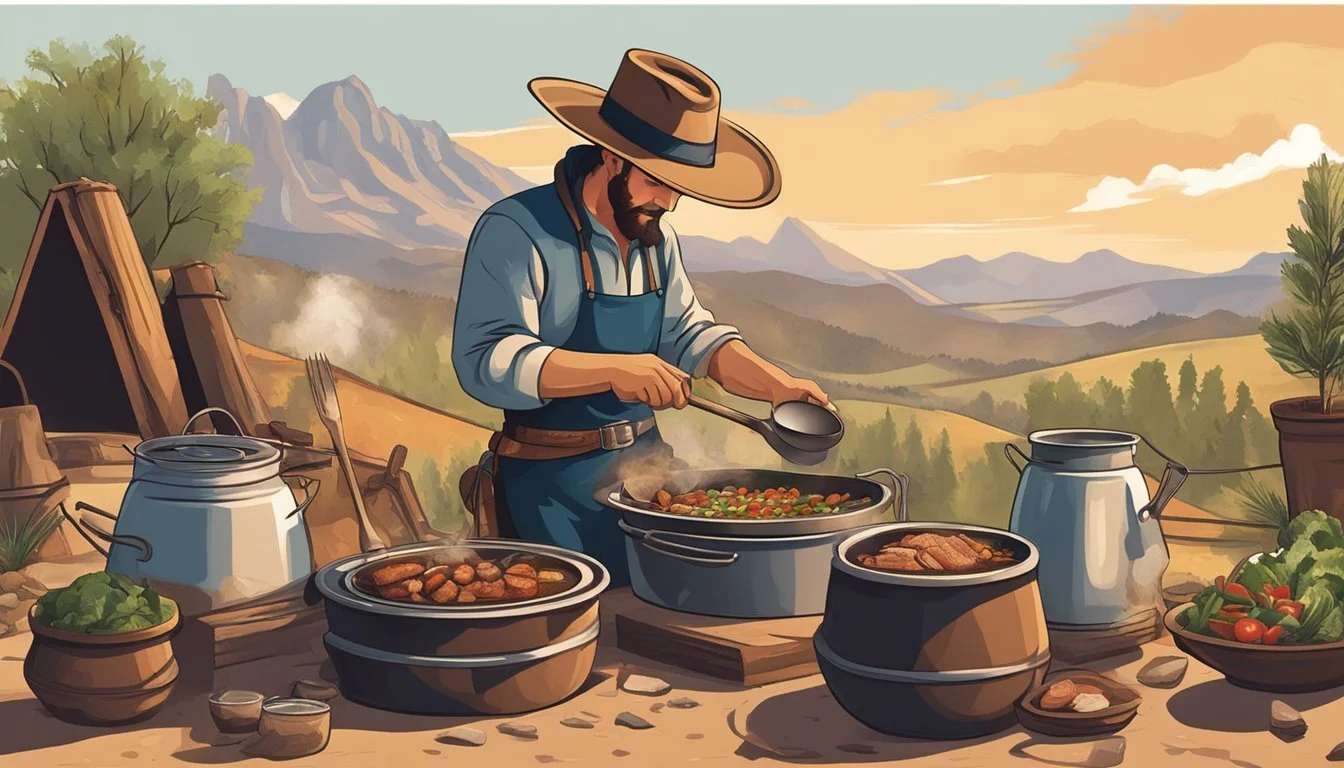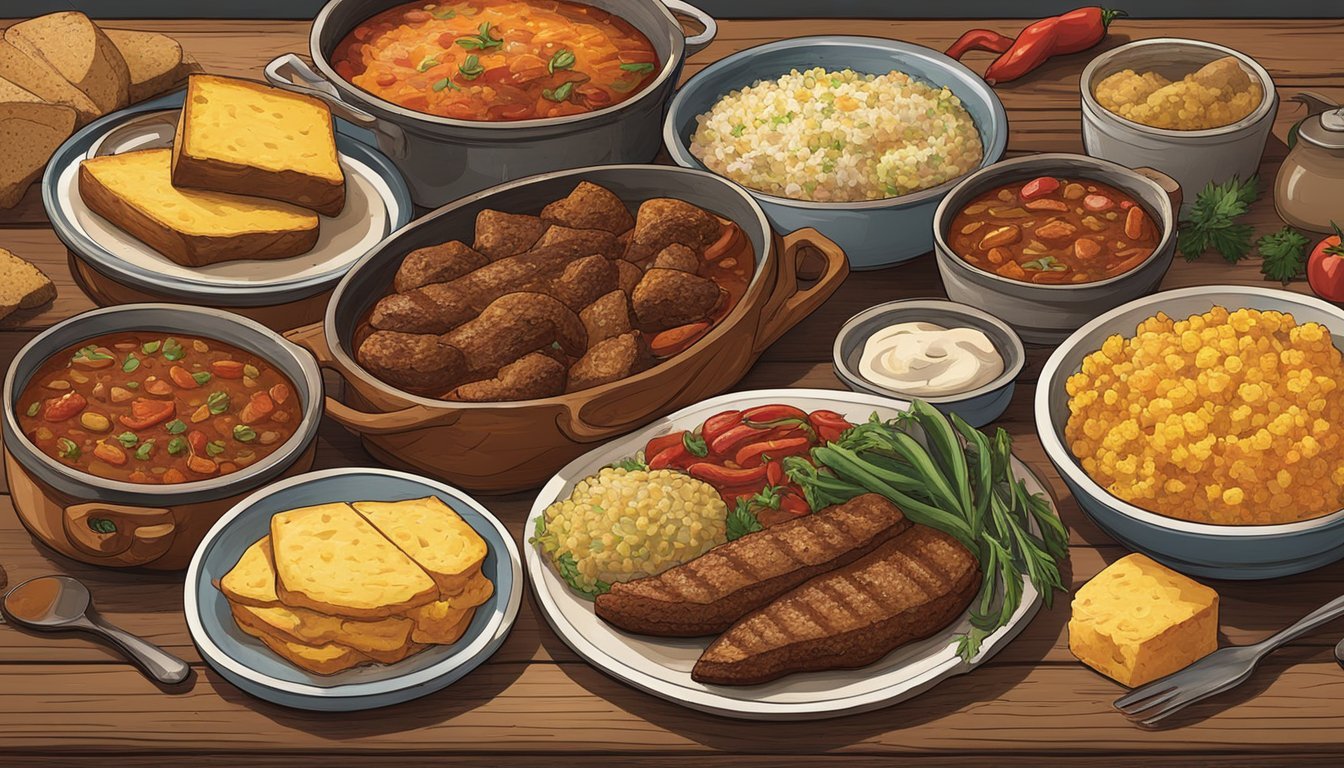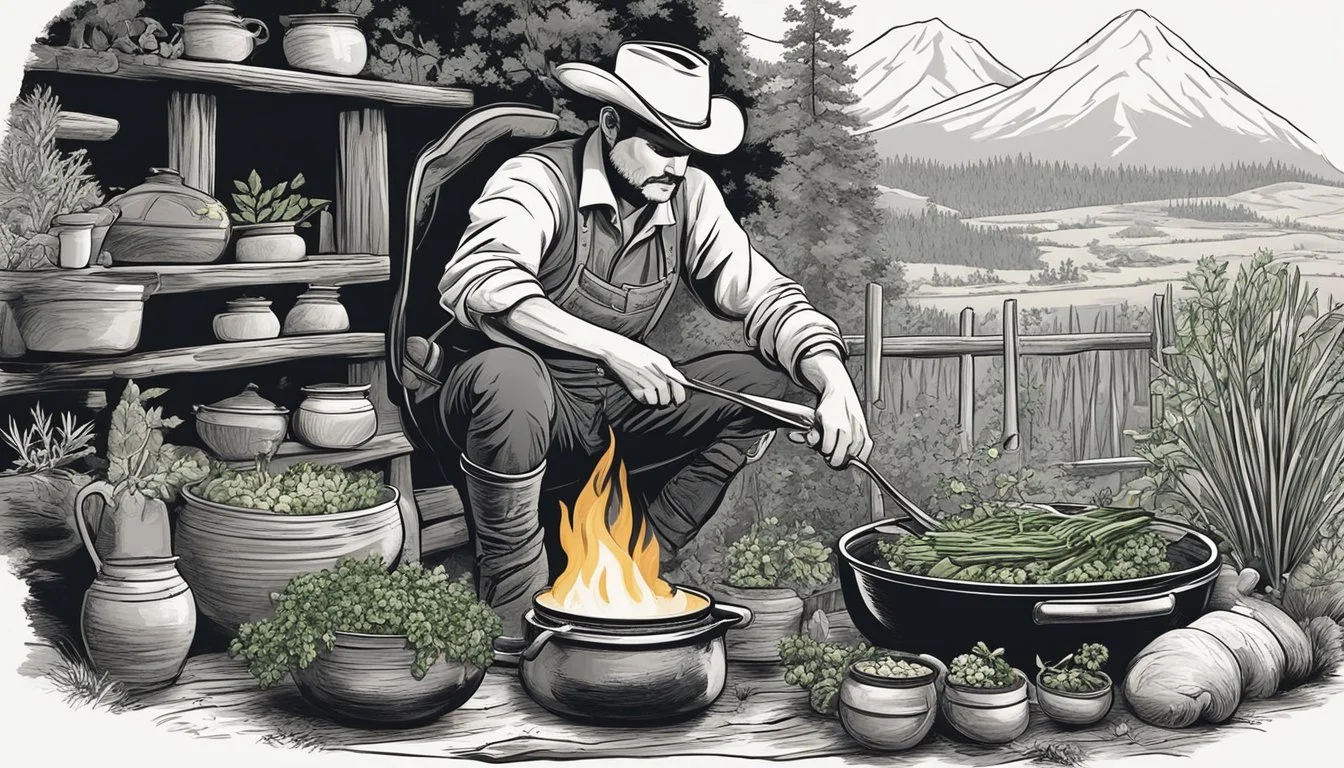The Health Benefits of Cowboy Cuisine
Exploring Its Nutritional Value
Cowboy cuisine, once pigeonholed as simple ranch food, has gained recognition for its nutritional value and ability to provide a wholesome meal. Embodying the spirit of the American West, this cuisine includes an array of dishes that are both hearty and healthful. A testament to its nutritional impact is the popular Cowboy Caviar, a dish that packs a potent combination of proteins, fibers, and vitamins. This mix of black beans, black-eyed peas, fresh vegetables, and sometimes avocados, delivers a robust eating experience that supports a balanced diet.
The health benefits of the ingredients commonly found in cowboy cuisine extend beyond mere sustenance. Black beans and black-eyed peas, staples in Cowboy Caviar, are rich in antioxidants and are known for their heart-healthy properties and ability to regulate blood sugar levels. The dish is often brightly colored with diced tomatoes and peppers, which are not just visually appealing but also teeming with immune-boosting vitamin C. Moreover, the inclusion of ingredients like avocado introduces vitamin E, essential for skin health and further immune support.
Nutritious eating does not have to be at odds with satisfying flavors, and cowboy cuisine exemplifies this harmony. The approachable and nutritious nature of these dishes makes them suitable for a range of diets and lifestyles. With its diverse flavors, cowboy cuisine offers a delightful approach to healthy eating that is as filling as it is nutritious, promoting overall well-being without compromising on taste.
Cowboy Cuisine Defined
Cowboy cuisine reflects the practical and nourishing food traditions of the American West. It prioritizes ingredients that could withstand the challenging conditions of the frontier and emphasizes the energy needs of hard-working cowboys.
Historical Significance
Cowboy cuisine is rooted in the foodways of 19th-century cattle drivers and ranchers across the American West. It was influenced by various cultures including Mexican vaqueros, European settlers, and Native Americans. The cuisine adapted to life on the trail, with food that could be easily transported and prepared over an open fire or in a single cast-iron pot.
Key Ingredients
The key ingredients in cowboy cuisine were dictated by their availability, durability, and nutritional value:
Meat: A primary source of protein, commonly beef and pork. Salt pork and bacon were prevalent due to their preservation qualities.
Beans: Pinto beans were a staple, providing essential nutrients and versatility in dishes.
Corn: Served as both a food source and livestock feed, essential in recipes like cornbread.
Vegetables: Local vegetables were gathered when available but were less common on the trail.
Herbs and Spices: Wild onions and various locally foraged herbs were used to flavor dishes.
Typical Dishes
Meals were hearty and filling, designed to sustain a cowboy through arduous labor. Common dishes included:
Stews (What wine goes well with stews?) and Soups: Often made with a base of meat, beans, and any available vegetables, cooked slowly over the fire.
Biscuits and Cornbread: Quick and easy breads that could be baked in a cast-iron pot.
Chili con Carne: A spicy stew with meat and chili peppers that became a beloved staple.
Cowboy Beans: A nutritious blend of beans cooked with meat, providing energy for long workdays.
Nutritional Profile of Cowboy Cuisine
Cowboy cuisine traditionally consists of simple, hearty meals that are both nutritious and filling. It was designed to sustain cowboys for long hours of hard physical work. Let’s examine the nutritional elements that make up this historical fare.
Macronutrients and Calories
In terms of macronutrients, cowboy cuisine is typically high in protein, crucial for muscle repair and growth. Smoked beef jerky, a staple of the cowboy diet, provides a concentrated source of protein. Meals often contained beans as well, which are not only rich in protein but also provide essential calories and carbohydrates, the body’s primary energy source. Fat intake came from the use of lard and meats, offering the calories needed for their labor-intensive days.
Vitamins and Minerals
Iron, a mineral necessary for oxygen transport in the blood, is abundantly found in beef, including the jerky cowboys consumed. Beans contribute to this as well, along with potassium, which is vital for nerve function and muscle contractions. The occasional inclusion of fresh or dried fruits and vegetables in the diet added important vitamins like Vitamin C for immune support and Vitamin B6 for protein metabolism.
Fiber and Antioxidants
Fiber intake came from beans and whole grains, supporting digestive health and providing a long-lasting satiety. Antioxidants were likely less emphasized in traditional cowboy cuisine due to the scarcity of fresh produce on the trail; however, they would have benefited from any available fresh fruits and vegetables. When they could get their hands on foods rich in vitamin E, an antioxidant, such as nuts or green leafy vegetables, it would help protect their cells from oxidative stress.
Health Advantages of Cowboy Cuisine
Cowboy cuisine, traditionally consisting of foods like beef, beans, and potatoes, offers several health benefits due to its nutrient-rich components. They not only provided the necessary energy for cowboys but can also contribute to a modern diet in a positive way.
Heart Health Impact
Beef, a staple of cowboy cuisine, when lean and consumed in moderation, can be a good source of healthy fats and proteins. These fats, particularly omega-3 fatty acids found in grass-fed varieties, can support heart health by maintaining healthy cholesterol levels and lowering blood pressure. However, it's crucial to balance this with plant-based sources to keep the heart-healthy benefits.
Digestive Benefits
A favored side dish, cowboy beans, are high in fiber which is beneficial for the digestive system. They can help maintain regular bowel movements and contribute to a healthy gut microbiome. Beans also have anti-inflammatory properties that can reduce inflammation in the digestive tract.
Weight Management
The portion sizes and ingredients in cowboy cuisine can contribute to weight loss if consumed responsibly. Beans and potatoes are high in complex carbohydrates and fiber, which can help one feel full longer, preventing overeating. Additionally, incorporating lean meats like jerky in moderate amounts can provide high satiety with lower calorie intake.
Special Dietary Considerations
Cowboy cuisine traditionally includes meat, beans, and grains, but it can be adapted to meet various dietary needs. Here's how one can maintain the spirit of the Wild West at the dinner table while catering to gluten-free, vegetarian, and lower-calorie diets.
Gluten-Free Options
Cowboy cuisine can cater to those avoiding gluten by substituting wheat-based staples with gluten-free grains such as quinoa or rice. Dishes like cowboy caviar, which typically includes beans and vegetables, are naturally gluten-free and rich in nutrients. It's essential to ensure that any sauces or dressings used are also free of gluten-containing ingredients.
Vegetarian and Vegan Adaptations
To adapt cowboy cuisine for vegetarians or vegans, one can replace meat with plant-based proteins like beans, lentils, or textured vegetable protein. Vegan adaptations might include using plant-based cheeses or dairy alternatives in recipes that traditionally contain dairy. A vegan version of cowboy caviar, for instance, offers a combination of proteins and fibers from beans and vitamins from an assortment of vegetables.
Low-Calorie Choices
For those seeking lower-calorie options, cowboy cuisine can be modified by reducing the use of high-calorie ingredients such as cheeses and creams. Opting for lean meats, increasing the proportion of vegetables, or using broth-based soups can create hearty yet low-calorie meals. Serving sizes can be adjusted to help manage calorie intake while still enjoying the flavors of the cuisine.
By considering these adaptations, cowboy cuisine can be nutritious and filling while accommodating a range of dietary preferences and requirements.
Preparation and Cooking
Cowboy cuisine encapsulates a rich tradition of preparation and cooking techniques that emphasize heartiness and simplicity. These methods were born out of necessity but have evolved to incorporate modern, healthier practices.
Traditional Cooking Methods
Historically, cowboy cuisine utilized open-flame cooking methods, such as grilling over a campfire or slow-cooking in a Dutch oven. Techniques included:
Grilling: Meat, often beef, was seared over flames for a smoky flavor.
Dutch Oven Baking: Bread and stews were commonly cooked in these heavy pots nestled in coals.
The reliance on these methods wasn't only due to flavor preference but also because of the limited resources available on the trail. Cowboys had to use what was at hand, which often included simple, portable grills or makeshift ovens dug into the ground.
Healthier Cooking Alternatives
Modern adaptations of cowboy cuisine can maintain the rugged flavors while enhancing nutritional value through alternative cooking methods. Health-conscious options include:
Air Fryer: This device can create crisp textures without the need for excessive oils, cutting down on fat while preserving the essence of fried foods (What wine goes well with fried foods?).
Sautéing: Using a hot pan and minimal oil, vegetables and lean meats can be quickly cooked to retain nutrients and flavors, diverging from traditional heavy stews.
By incorporating these methods, contemporary cowboy dishes can benefit from reduced calorie counts and improved nutritional profiles, aligning with today's health standards. The old staples, when prepared with new techniques, can offer a balance between robust satisfaction and conscientious eating.
Recipes and Meal Ideas
This section provides a range of cowboy-inspired recipes that are both nutritious and filling, featuring starters and salads, hearty main courses, and satisfying desserts and snacks.
Starters and Salads
Cowboy Caviar: A zesty mix that typically combines black beans, corn, tomatoes, peppers, and a tangy lime dressing. Rich in proteins and vitamins, it's often served with tortilla chips.
Lettuce Wraps: These wraps can include a savory filling of lean ground beef or chicken, seasoned with traditional Southwest spices, providing a low-carb alternative packed with flavor.
Main Courses
Beef Chili: A staple cowboy dish utilizing slow-cooked beans and beef in a rich tomato-based sauce, perfect for a substantial, protein-rich meal.
Chicken Casserole: This dish often features shredded chicken in a hearty sauce with vegetables like bell peppers and onions and can be a great source of lean protein.
Salmon: A less traditional option, offering omega-3 fatty acids, can be grilled with a simple seasoning of olive oil, garlic, and herbs.
Desserts and Snacks
Dessert: A simple, rustic fruit cobbler using seasonal berries or peaches can provide a sweet end to the meal while keeping nutritional value in mind.
Snacks: Trail mix with nuts, seeds, and dried fruit offers a nutritious, energy-packed snack perfect for on-the-go activities.
Flavors and Seasonings
Cowboy cuisine, known for its hearty and robust flavors, incorporates a variety of seasonings to create its distinctive taste. A core element of this culinary tradition is the use of fresh herbs and spices which not only enhance flavor but also contribute to the overall nutritional value.
Essential Herbs and Spices:
Cilantro: An herb with bright, lemony tones, cilantro is often used to add a fresh burst of flavor to dishes such as Cowboy Caviar.
Basil: Sweet and slightly peppery, basil contributes a subtle warmth and aromatic quality to cowboy recipes.
Garlic: A cornerstone in cowboy cooking, garlic adds depth and an earthy punch to soups and stews.
Jalapeño: This chili pepper introduces a spicy kick, synonymous with the bold flavors of the Southwest.
Classic cowboy dishes frequently feature a blend of spices that may include:
Pepper: Ground black pepper provides a pungent bite that is versatile and can be used in nearly every cowboy dish.
Cinnamon: While not as commonly used, cinnamon can be found in sweet and savory plates, offering a sweet, woody flavor.
Salt: A fundamental seasoning, salt is used to balance and enhance the natural flavors of ingredients.
The integration of these seasonings results in a cuisine that is both full of flavor and nutrition. Spices such as garlic and jalapeño contain compounds with potential health benefits, while herbs like cilantro and basil contribute antioxidants and essential nutrients.
In summary, the rich tapestry of flavors and seasonings in cowboy cuisine is not only appealing to the palate but also supports a balanced diet. This combination of taste and wholesomeness makes these dishes a timeless choice for those seeking nutritious and filling meals.
Trends and Adaptations
Cowboy cuisine has evolved beyond its rustic origins, incorporating modern dietary trends while retaining its hearty, satisfying nature. Today's adaptations are characterized by healthier choices and diverse culinary influences.
Contemporary Influences
Cowboy cuisine has witnessed a blend of traditions with contemporary tastes. Modern cowboy cuisine often sees the incorporation of international flavors and techniques, respecting the essence of traditional recipes while adding a touch of global diversity. Adjustments are made to accommodate the wide range of dietary preferences found in contemporary society, reflecting both the mobility of people and the accessibility of various world cuisines. For example, a classic cowboy stew might be enriched with ingredients like quinoa or turmeric, acknowledged for their health properties and adopted from different parts of the world.
Health-Conscious Adaptations
The move towards health-conscious adaptations in cowboy cuisine is significant. This shift focuses on:
Reducing added sugar and saturated fat: Traditional recipes are modified to lower unhealthy components without compromising on taste. This is achieved by substituting ingredients or adjusting cooking methods.
Incorporating lean proteins: Cowboy diets now emphasize lean meats such as chicken and fish, or plant-based proteins like beans and lentils.
Using whole foods: A cornerstone of healthy eating, whole foods are increasingly featured to provide unrefined and minimally processed options.
Table: Cowboy Cuisine Nutritional Adjustments
Traditional Ingredient Health-Conscious Substitute Ground Beef (High Fat) Lean Ground Turkey White Flour Whole Wheat or Almond Flour Bacon Fat Olive or Avocado Oil Refined Sugar Honey or Maple Syrup
These modifications ensure that cowboy cuisine remains nourishing while aligning with contemporary nutritional knowledge and practices.
Frequently Asked Questions
In this section, we address common inquiries regarding the nutritional benefits, allergen considerations, and potential recipe modifications for those interested in cowboy cuisine.
Nutritional Content
Cowboy cuisine, particularly dishes like Cowboy Caviar, is rich in protein and good fats. A single serving can provide a healthy dose of nutrients. For example, a half can of black-eyed beans contributes approximately 8 grams of protein. Avocado, another staple in this dish, adds around 3 grams of protein and healthful fats. Olive oil, frequently used in cowboy cuisine, is a source of monounsaturated fatty acids beneficial for heart health.
Common nutrients found in cowboy cuisine include:
Protein: beans, avocado
Good fats: avocado, olive oil
Vitamins and minerals: from a variety of fresh vegetables and citrus in dressings
Allergy Information
Those with specific dietary needs should be aware of the ingredients in cowboy cuisine. Common allergens can include:
Beans: Legumes can be an allergen for some individuals.
Avocado: Though less common, avocado allergies do exist.
It's critical for individuals with food allergies to review the ingredients list thoroughly and consult with a healthcare provider if there is any uncertainty regarding potential allergens.
Recipe Adjustments
Cowboy cuisine recipes are versatile and can be adjusted to suit various diets and address allergy concerns.
For vegans and vegetarians:
No adjustments needed as cowboy cuisine like Cowboy Caviar is plant-based by default.
For gluten-free diets:
Ensure that all packaged ingredients, such as canned beans or dressings, are labeled gluten-free.
Substitutions for common allergens:
Beans can be swapped with grains like quinoa for those with legume allergies.
Avocado can be omitted or replaced with other fresh vegetables for those with an avocado allergy.
By making thoughtful substitutions, individuals can enjoy the flavors and nutritional benefits of cowboy cuisine while adhering to dietary restrictions.


